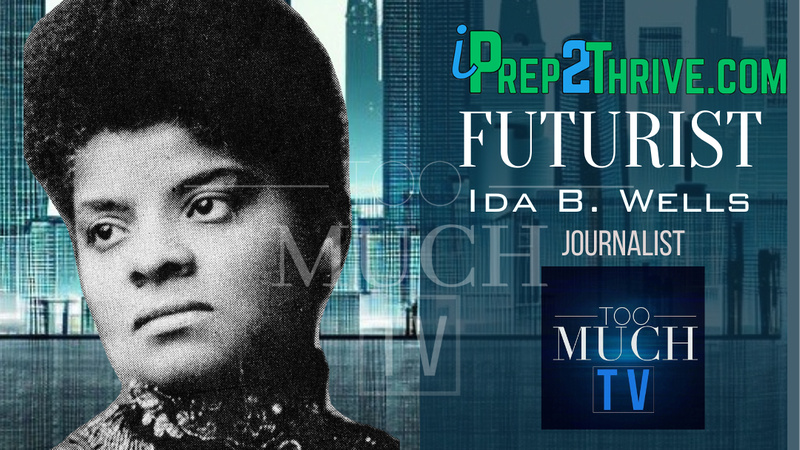Who Said Hollywood Had To Be In California?
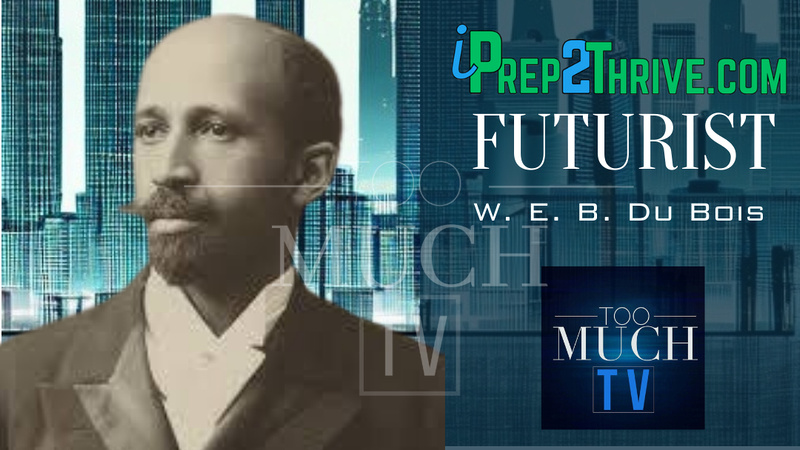 Futurist W.E.B DuBoisFuturist W.E.B DuBois Futurist W.E.B DuBoisFuturist W.E.B DuBois
Introduction:
In the early 20th century, amid the backdrop of racial segregation and discrimination, a group of visionaries emerged as the architects of change. The Niagara Movement, a pioneering civil rights organization, was founded by individuals who can be aptly described as futurists. W.E.B. Du Bois, one of the most prominent leaders of the Niagara Movement, was a true visionary who played a pivotal role in shaping the future of civil rights in the United States. This blog post delves into the life and contributions of W.E.B. Du Bois as a futurist in the Niagara Movement.
Early Life and Education:
William Edward Burghardt Du Bois, born in 1868, was raised in Great Barrington, Massachusetts. He demonstrated exceptional intellect from an early age and became the first African American to earn a Ph.D. from Harvard University. His scholarly achievements would become instrumental in his future work as a civil rights leader.
Founding the Niagara Movement:
In 1905, Du Bois, along with William Monroe Trotter and other like-minded individuals, established the Niagara Movement. Named after their initial meeting near Niagara Falls, Canada, the organization was a response to the systemic racial injustices and segregation that gripped the United States. Du Bois's role as a futurist in this movement was instrumental in shaping its principles and goals.
Pillars of Futurism in the Niagara Movement:
1. **Equal Rights and Racial Equality:** W.E.B. Du Bois was a staunch advocate for racial equality. His futurist vision encompassed a future where African Americans enjoyed the same rights and opportunities as their white counterparts. He believed in the importance of full citizenship rights, education, and equal treatment under the law.
2. **The Right to Vote:** Du Bois recognized that political representation was crucial for achieving civil rights. He actively worked to secure voting rights for African Americans and saw this as a vital step toward a more equitable future.
3. **Education and Knowledge:** Du Bois was an advocate for education, not just as a means to acquire knowledge but as a tool for social progress. He believed that an educated African American population was essential for breaking down barriers and achieving equal rights.
4. **Unity and Solidarity:** The Niagara Movement embraced an inclusive and unified vision for the future. Du Bois understood that progress could only be achieved through the collective efforts of African Americans and their allies.
Legacy and Influence:
W.E.B. Du Bois's contributions as a futurist in the Niagara Movement have left an indelible mark on the civil rights movement in the United States. His visionary leadership, intellectual prowess, and tireless advocacy laid the foundation for subsequent civil rights efforts.
Conclusion:
W.E.B. Du Bois, a futurist leader of the Niagara Movement, was a visionary who envisioned a future where racial inequality was eradicated and African Americans enjoyed the full rights and privileges of citizenship. His steadfast commitment to education, unity, and equal rights continues to inspire those working for justice and equality. Du Bois's legacy is a testament to the power of forward-thinking visionaries who dare to dream of a brighter future and work tirelessly to make it a reality.
In the annals of American history, few figures shine as brightly as Ida B. Wells, a courageous journalist, suffragist, and anti-lynching crusader. Wells was not just a prominent civil rights activist of her time but can also be aptly described as a futurist, given her progressive and forward-thinking stance on issues of racial equality. This blog post will explore the life and legacy of Ida B. Wells as a futurist, focusing on her pivotal involvement with the Niagara Movement.
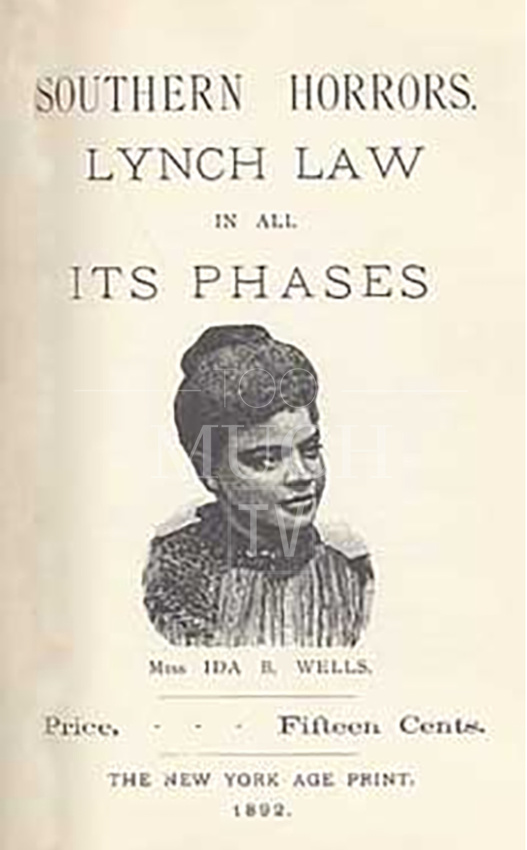 IMG_7914 IMG_7914
Ida B. Wells: A Champion of Justice:
Born in 1862, Ida B. Wells witnessed the relentless injustice of racial discrimination from a young age. Her career as a journalist began in the late 19th century, and she used her writing to expose the harsh realities of lynching and segregation in the United States. Wells, through her fearless journalism, was at the forefront of advocating for racial and gender equality, often ahead of her time.
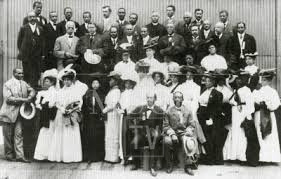 IMG_7915 IMG_7915
The Niagara Movement: A Progressive Beacon:
The Niagara Movement, established in 1905, was a progressive civil rights organization that sought to challenge racial inequality and discrimination. Founders W.E.B. Du Bois, William Monroe Trotter, and others held a pivotal meeting at Niagara Falls, Canada, to draft a manifesto that decried the racial injustices of the time.
Ida B. Wells and the Niagara Movement:
Ida B. Wells was an essential participant in the Niagara Movement, aligning her progressive vision for civil rights with the organization's goals. Her involvement was multifaceted and included:
1. **Championing Anti-Lynching Legislation:** Ida B. Wells had already made a name for herself as a fierce advocate against lynching through her journalism. At the Niagara Movement, she played a vital role in pushing for anti-lynching legislation, paving the way for future legal victories in the fight against racial violence.
2. **Racial Equality and Voting Rights:** Wells's activism extended to fighting for racial equality and voting rights, core pillars of the Niagara Movement. She advocated for the abolition of segregation, the right to vote, and access to quality education, aligning her vision with the future aspirations of civil rights activists.
3. **Gender Equality:** Wells was also a vocal advocate for gender equality. At the Niagara Movement, she championed the rights of African American women, a crucial aspect of her futurist vision for civil rights.
A Futurist Legacy:
Ida B. Wells's futurist perspective in the context of the Niagara Movement was rooted in her unwavering belief in the power of collective action and the vision of a more just and equitable future. Her tireless efforts laid the groundwork for the civil rights movement's advancements in the 20th century and continue to inspire social justice advocates today.
Conclusion:
Ida B. Wells, a pioneering African American journalist, anti-lynching activist, and suffragist, left an indelible mark on the history of investigative reporting. Through her fearless and groundbreaking writings, Wells exposed the brutal realities of lynching in the late 19th and early 20th centuries, challenging the prevailing narratives and advocating for justice. Her impactful work laid the foundation for investigative journalism as a tool for social change. In homage to her legacy, the Ida B. Wells Society for Investigative Reporting was established, playing a crucial role in promoting diversity and excellence in investigative journalism. The society continues Wells's commitment to truth and justice by providing training, mentorship, and support for journalists of color. In doing so, it not only honors the memory of a trailblazer but also works towards a more inclusive and equitable future for investigative reporting.
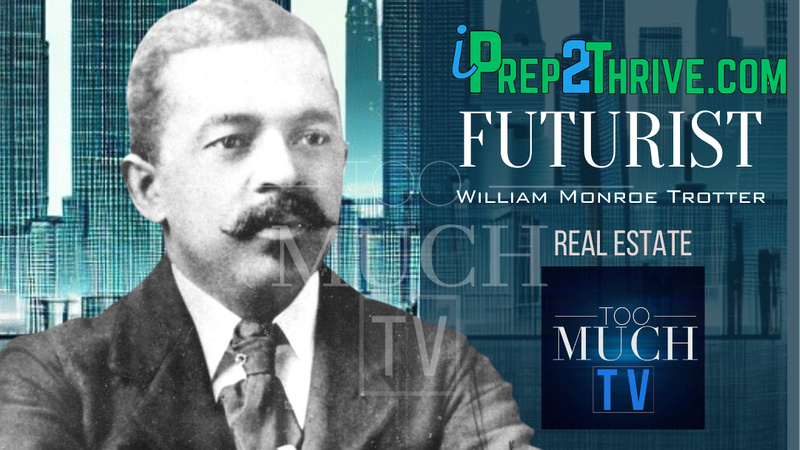 Futurist William Monroe TrotterFuturist William Monroe Trotter Futurist William Monroe TrotterFuturist William Monroe Trotter
Introduction:
In the early 20th century, a powerful force for racial equality emerged in the form of the Niagara Movement. This civil rights organization, which laid the groundwork for the NAACP, was spearheaded by a group of visionary leaders who can rightly be called futurists. Among these luminaries, William Monroe Trotter, a prominent journalist, civil rights activist, and social critic, played a central role. This blog post will delve into Trotter's life and his contributions as a futurist in the Niagara Movement.
Early Life and Activism:
Born in 1872 in Boston, William Monroe Trotter was a descendant of African American and Native American heritage. A graduate of Harvard University, he became a skilled orator, writer, and journalist, with a keen understanding of the complexities of racial injustice in America.
Founding the Niagara Movement:
In 1905, Trotter, along with W.E.B. Du Bois and others, founded the Niagara Movement, named after the group's first meeting location near Niagara Falls, Canada. The movement aimed to confront the racial inequalities and systemic injustices that plagued the nation. William Monroe Trotter's role in this organization exemplified his futurist vision for civil rights.
Key Contributions as a Futurist:
1. **Fighting for Full Civil and Political Rights:** Trotter, much like his Niagara Movement colleagues, was a staunch advocate for the full realization of civil and political rights for African Americans. His futurist perspective envisioned a future in which all citizens had the right to vote, access to education, and equal protection under the law.
2. **Direct Action and Protest:** Trotter was a proponent of direct action and civil disobedience as tools for change. He believed that passive resistance and vocal protest were crucial in challenging the status quo and forcing the nation to confront its injustices.
3. **Championing Anti-Lynching Legislation:** Trotter was a vocal advocate for federal anti-lynching legislation. He understood that the horrors of lynching were a profound stain on America's moral fabric and believed that only federal intervention could put an end to this form of racial terror.
4. **Racial Unity and Global Perspective:** Trotter, like other futurists of the Niagara Movement, recognized the importance of unity among African Americans and their allies. He also embraced an international perspective, seeking support and solidarity from global communities to press for racial equality in the United States.
Legacy and Inspiration:
William Monroe Trotter's legacy as a futurist in the Niagara Movement remains an enduring source of inspiration for those fighting for justice and equality. His fearless advocacy, progressive ideals, and tireless efforts laid the groundwork for the civil rights movements of the 20th century.
Conclusion:
William Monroe Trotter's role in the Niagara Movement reflects his vision of a more equitable future, where racial discrimination, segregation, and injustice were replaced by equality and justice. His contributions as a futurist continue to serve as a guiding light in the ongoing struggle for civil rights. Trotter's unwavering commitment to a brighter future for all has left an indelible mark on the pages of American history, reminding us that it is the futurists of the past who have paved the way for progress and change.
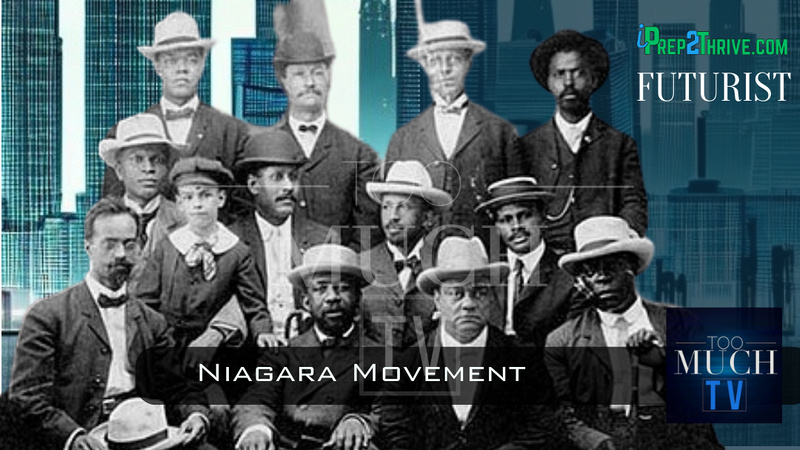 Niagara MovementNiagara Movement Niagara MovementNiagara Movement
Introduction:
In the early 20th century, a group of visionary activists came together to lay the foundation for the future of the civil rights movement in the United States. The Niagara Movement, often described as a precursor to the NAACP, was founded by a group of exceptional individuals who can be considered pioneers of futurism in the realm of civil rights. In this blog post, we will explore how the leaders of the Niagara Movement were futurists who laid out a transformative vision for the struggle for racial equality, and we will outline the key pillars of this influential movement.
The Niagara Movement: A Brief Overview:
Founded in 1905, the Niagara Movement was a civil rights organization established by a group of African American intellectuals, including W.E.B. Du Bois, William Monroe Trotter, and Ida B. Wells. The organization's name was inspired by the location of its first meeting near Niagara Falls, where its members gathered to address racial discrimination, segregation, and inequality in the United States.
Pillars of the Niagara Movement:
1. Equality:
The leaders of the Niagara Movement firmly believed in the foundational pillar of equality. They recognized that the future of civil rights in America required dismantling the discriminatory laws and practices that upheld racial segregation. They called for equal rights, opportunities, and treatment for African Americans in all aspects of American society.
2. Civil and Political Rights:
The Niagara Movement leaders were staunch advocates for civil and political rights. They demanded the right to vote, access to education, and equal protection under the law. The movement played a pivotal role in pushing for the enforcement of the 15th Amendment, which granted African Americans the right to vote, and they understood the future's need for political representation.
3. Economic Opportunity:
Recognizing that economic empowerment was crucial for achieving true equality, the Niagara Movement leaders called for economic opportunities for African Americans. They highlighted the importance of job access, equal pay, and the eradication of economic disparities rooted in racial discrimination.
4. Education:
Education was a cornerstone of the Niagara Movement's futurist vision. Its leaders understood that education was the key to achieving social and economic progress. They pushed for access to quality education and the removal of barriers to higher learning, ultimately laying the groundwork for future generations of African Americans to excel academically.
5. Unity and Activism:
The Niagara Movement was founded on the principle of unity among African Americans and their allies. Leaders urged the community to actively engage in the fight for civil rights, promoting grassroots activism as a means to achieve social change. They called on African Americans to join forces in the pursuit of justice and equality.
6. International Perspective:
The Niagara Movement pioneers recognized that the struggle for civil rights was not confined to the United States alone. They adopted an international perspective and sought support from global communities to pressure the U.S. government into addressing racial injustice.
Conclusion:
The leaders of the Niagara Movement were true futurists in the realm of civil rights. They foresaw a future in which equality, civil and political rights, economic opportunity, and access to quality education were fundamental for African Americans. Their vision and tireless activism laid the foundation for the modern civil rights movement, shaping a better future for generations to come. Their legacy continues to inspire advocates for justice and equality, reminding us that progress is built upon the visionary ideals and unwavering determination of those who dare to dream of a brighter future.
 Futurist Kevin BobbittFuturist Kevin Bobbitt Founder of KCSSU Futurist Kevin BobbittFuturist Kevin Bobbitt Founder of KCSSU Introduction:
Introduction:
In today's fast-paced world, futurists are those who actively shape tomorrow by addressing the needs and concerns of today. Kevin Bobbitt, a visionary leader with a keen sense of community responsibility, embodies the role of a futurist. Through his work with KCSSU (Kemetic Cultural Science & System of Unity), he prepares for the future by creating impactful programs and initiatives that empower individuals and communities. In this blog post, we will delve into the remarkable journey of Kevin Bobbitt and how he is laying the foundation for a brighter future through his various initiatives.
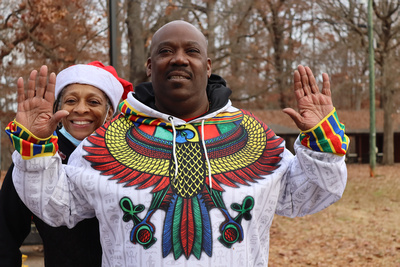 KCSSU ChristmasKCSSU Christmas KCSSU ChristmasKCSSU Christmas
 Shaw UniversityShaw University Shaw UniversityShaw University
Toy Giveaway for Christmas:
Christmas is a time of joy and giving, and KCSSU recognizes the importance of spreading happiness during the holiday season. They hosts a heartwarming toy giveaway that brightens the lives of children and families in need. This annual event is a testament to Kevin's unwavering commitment to ensuring that no child in the community goes without a special gift during the festive season.
 IMG_7399 IMG_7399
Backpack Giveaway for Back-to-School:
Preparation for the future begins with education, and KCSSU is well aware of the challenges faced by students in underserved communities. To equip young minds for success, he hosts a backpack giveaway before the school year begins. These backpacks are filled with essential supplies, easing the financial burden on families and giving students the tools they need to excel in their studies.
Reading Program to Combat the School-to-Prison Pipeline:
Kevin Bobbitt understands the perils of the school-to-prison pipeline and the importance of breaking its cycle. To combat this deeply entrenched issue, he has initiated a reading program that encourages literacy, critical thinking, and engagement among young people. By fostering a love for reading and learning, Kevin is offering a lifeline to students at risk of falling into the pipeline, redirecting them toward a brighter future.
Community Gardens:
The concept of sustainable living and community unity is at the forefront of Kevin Bobbitt's vision. He has spearheaded the creation of community gardens that promote environmental awareness, provide fresh produce for families, and encourage community members to connect with the earth and each other. These gardens not only enrich the physical landscape but also cultivate a sense of shared responsibility and harmony.
Arriving at the National Museum of African American History and CultureFuturist Kevin Bobbitt takes a group of students to the African American History and Culture
Trips to Washington, D.C., and the African American Museum:
Kevin Bobbitt's commitment to education and cultural enrichment extends beyond his community. He organizes trips to Washington, D.C., giving individuals the opportunity to visit the African American Museum and other historical landmarks. These experiences foster a deeper understanding of African American history and inspire a sense of pride and identity.
KSCCU Equity Summitt 3KSCCU Equity Summitt 3
Equity Summit for Community Conversations:
One of the hallmarks of Kevin Bobbitt's futurist approach is his dedication to fostering community dialogue. He hosts equity summits that bring together community members, leaders, and experts to engage in meaningful conversations about housing, education, mental health, and other critical topics. By facilitating these conversations, he empowers the community to address these issues and collectively shape a more equitable future.
Conclusion:
Kevin Bobbitt, the futurist behind KCSSU, is a beacon of hope and transformation for the community he serves. Through his tireless efforts in hosting toy and backpack giveaways, establishing reading programs, nurturing community gardens, organizing educational trips, and hosting equity summits, he has shown that true visionary leadership is about making a difference today to prepare for a brighter future. Kevin Bobbitt's work serves as an inspiration, demonstrating the power of proactive community engagement and the potential to break the cycles of adversity and inequality, paving the way for a better tomorrow.
|
charities
Download the CashFlow App Today!
 Futurist (1) Futurist (1)
Join us for a once-in-a-lifetime experience as we witness the awe-inspiring total solar eclipse on April 8, 2024, as it graces the skies over North America.
niagara 2
BECOME A FUTURE MELANATED ENGINEER
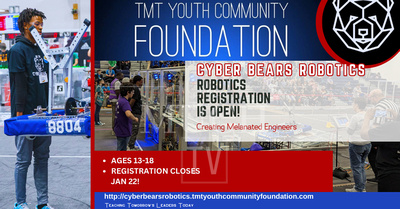 2 Melanated Robotics(360 x 640 px) (720 x 1280 px) (955 x 500 px)-2 2 Melanated Robotics(360 x 640 px) (720 x 1280 px) (955 x 500 px)-2
Archive
January
February
March
April
May
June
July
August
September
October
November
December
|


